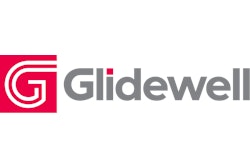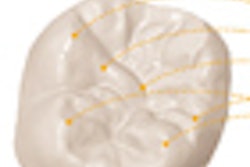
Major shifts are occurring in the digital impressioning business that are expected to make dental CAD/CAM more attractive and affordable for dental practitioners.
In fact, the era of dental CAD/CAM has arrived, and the market is poised for significant growth, according to Michael DiTolla, DDS, director of clinical education at Glidewell Laboratories, and Bob Steingart, president of SensAble Technologies, two companies that provide digital impressioning products and services for dental labs and dental practitioners.
Both came away from the recent Lab Day in Chicago impressed by the number of new products and companies they see entering this market and excited by the prospects of suppliers choosing to end the per-click fees that have, for the most part, inhibited broader adoption of digital impressioning systems.
"There are several vendors out there that are looking at re-evaluating their business models," Steingart said. "I think they are realizing that even if the technology is cool, if they don't have a business model, where are we?"
Dr. DiTolla agreed.
“From the dentist's viewpoint, what's not
to like?”
— Bob Steingart, president, SensAble
Technologies
"I think the main thing that has limited growth in the purchase of digital impression scanners has been the business model set up by the first two companies to offer commercial digital impression equipment: the per-click fee," he said. "Once you bought the equipment, you had to pay to use the systems, and dentists hate stuff like that."
Sirona Dental Systems, for example, no longer requires the click fees, he noted, nor does IOS Technologies, the company Glidewell is partnering with to release a digital impression scanner. And several smaller companies that are reportedly gearing up to enter this market are pondering similar approaches, according to Steingart.
"That is part of improving the business model so it makes economic sense for the dentist," Dr. DiTolla said.
Dental CAD/CAM makes economic sense for Glidewell as well, he added. With the growing popularity of the company's BruxZir and IPS e.max zirconia products, Glidewell now uses CAD/CAM to produce 50% of its restorations -- including 100% of its BruxZir and 75% of its e.max crowns, he said.
"Even 50% of the PFMs we are fabricating today are assembled from CAD/CAM parts," he said. "Here at Glidewell, CAD/CAM is not the future -- it is how we make 50% of our products now."
Dr. DiTolla attributes this to the surprisingly quick adoption of new monolithic, full-contour restorations made from lithium disilicate, which are proving to be both durable and aesthetically pleasing.
"Dentists are ordering these products not so much because they are CAD/CAM but because they are products that look good and perform well," he said. "And for us, CAD/CAM is the most efficient and accurate way to produce these."
Another value proposition
Glidewell hopes to make the digital impressioning value proposition more attractive to dentists as well through its relationship with IOS, Dr. DiTolla added.
"The prices for CAD/CAM restorations haven't come down yet, but they are about to," he said. "What we are going to do for dentists who are willing to make this process fully digital and make the impression with this scanner is to give dentists $20 of a BruxZir or e.max crown regardless of the digital impression scanner they use. A BruxZir impression is usually $99, but if they take the scan themselves and send it to us, it will only cost $79."
Customers who go digital can save an additional $7 in FedEx costs, he added. Plus the restorations are more accurate than is possible with traditional impression materials and die stones used to make a model.
In addition to improvements in pricing, SensAble is working to further enhance the accuracy of digital impressions. The company's Intellifit TE Digital Restoration System -- previously known as the SensAble Dental Lab System -- is an integrated scan, design, and fabrication product that supports the production process for partial frameworks, as well as crown and bridge substructures.
"In the process of going from analog to digital, there are inherent distortions," Steingart explained. "What we've done with Intellifit is spend a lot of time improving the process of taking a digital model and making sure it is actually what you wanted. Intellifit tries to anticipate what the distortions might be and compensate for that so that you end up with a better-fitting part the first time around."
At the recent Lab Day, for example, SensAble showcased its new virtual articulator, which mimics the feel and function of a physical articulator, yet allows dynamic settings to meet patient specifications and freedom of movement in three dimensions, according to the company. Here again, Steingart emphasized, the goal is to use technology to help dentists create better-fitting parts with less chairside time.
"From the dentist's viewpoint, what's not to like?" he said. "Better-fitting products and lots of competition in the market, so there are more choices and prices are coming down."
Still, some barriers to adoption remain, Dr. DiTolla noted.
"There are some technical ones, but more important are the mental ones," he said. "There really is nothing wrong with traditional impressions, and most dentists don't perceive they have a problem with the way they currently take impressions. So to ask them to switch how they make impressions and spend $25,000 on the equipment has a lot of them shaking their heads. But if you can show how they can save a significant amount on their lab bill -- that can make a difference."



















